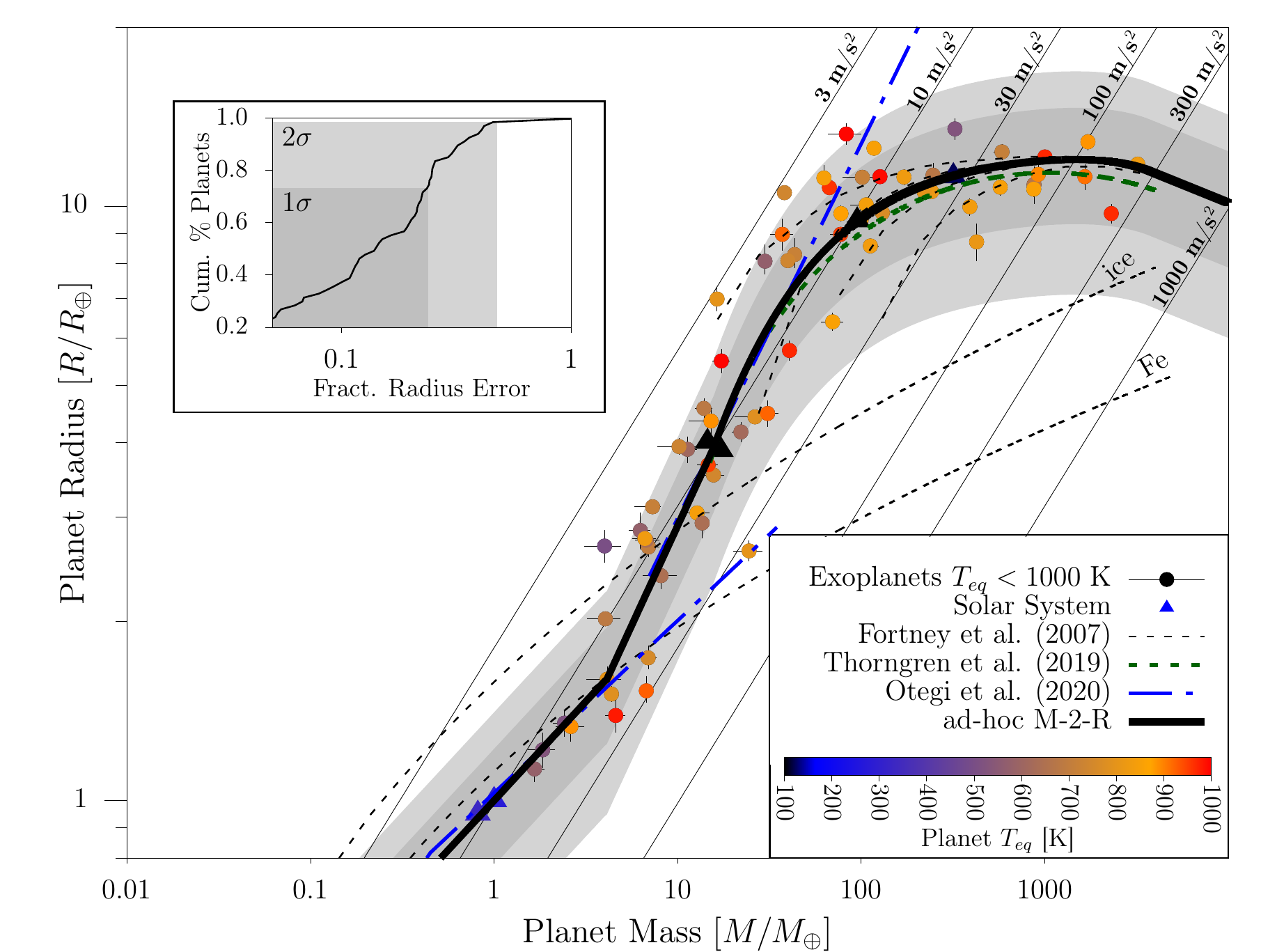Function Documentation
◆ planetMass2Radius()
| units::realT mx::astro::planetMass2Radius | ( | typename units::realT | mass | ) |
An ad-hoc planetary mass-to-radius relationship.
The goal of this function is to provide a radius given an exoplanet mass, for lightly-irradiated exoplanets. By lightly-irradiated we mean (roughly) planet's at Mercury's separation or further, scaled for stellar luminosity. Here we make use of the transition from rocky to gas-dominated composition at \( 1.6 R_e \) identified by Rogers [21] (see also Marcy et al. (2014) [13]). Below this radius we assume Earth composition and so \( R \propto M^{1/3}\). Above this we scale with a power law matched to the mean radius and mass of Uranus and Neptune, which defines the radius between \( 1.6^3 M_\oplus \) and this Uranus-Neptune mean point. Above this point we use a polynomial fit (in log(M)) to points including the Uranus/Neptune mean, Saturn, Jupiter, and above Jupiter's mass the average points from the 4.5 Gyr 1 AU models from Fortney et al. (2007) [4]. Above 3591.1 \( M_\oplus \) ( \(\sim 11 M_{jup}\)) we scale as \( M^{-1/8} \) based on the curve shown in Fortney et al. (2011) [5].
\( \frac{R}{R_\oplus} = \begin{cases} \left(\frac{M}{M_\oplus}\right)^{1/3}, & M < 4.1 M_\oplus \\ 0.62\left(\frac{M}{M_\oplus}\right)^{0.67}, & 4.1 M_\oplus \le M < 15.84 M_\oplus \\ 14.0211 - 44.8414 \log_{10}\left(\frac{M}{M_\oplus}\right) + 53.6554 \log_{10}^2\left(\frac{M}{M_\oplus}\right) -25.3289\log_{10}^3\left(\frac{M}{M_\oplus}\right) + 5.4920\log_{10}^4\left(\frac{M}{M_\oplus}\right) - 0.4586 \log_{10}^5\left(\frac{M}{M_\oplus}\right), & 15.84 \le M < 3591.1 M_\oplus \\ 32.03 \left(\frac{M}{M_\oplus}\right)^{-1/8}, & 3591.1 M_\oplus \le M \end{cases} \)

circles are the Solar system. Black circles indicate expoplanets with Teq below that of a blackbody at Mercury's separation (413 K)."
This function makes use of the units type system (Unit Conversions) so it can be used with Earth masses, Jupiter masses, kg (SI units), etc.
- Returns
- the estimated radius of the planet.
- Template Parameters
-
units is the units-type specifying the units of mass. See Unit Conversions.
- Parameters
-
mass The mass of the planet.
Definition at line 61 of file planets.hpp.
References mx::math::six_fifths().